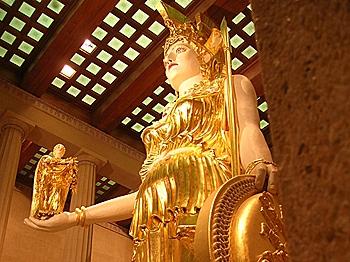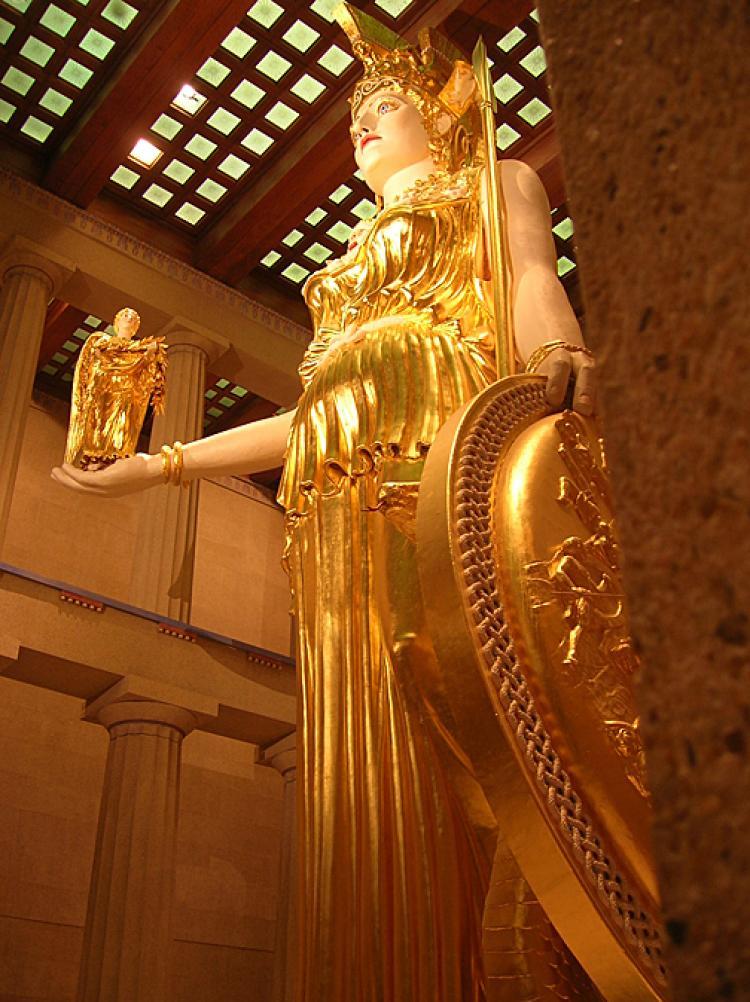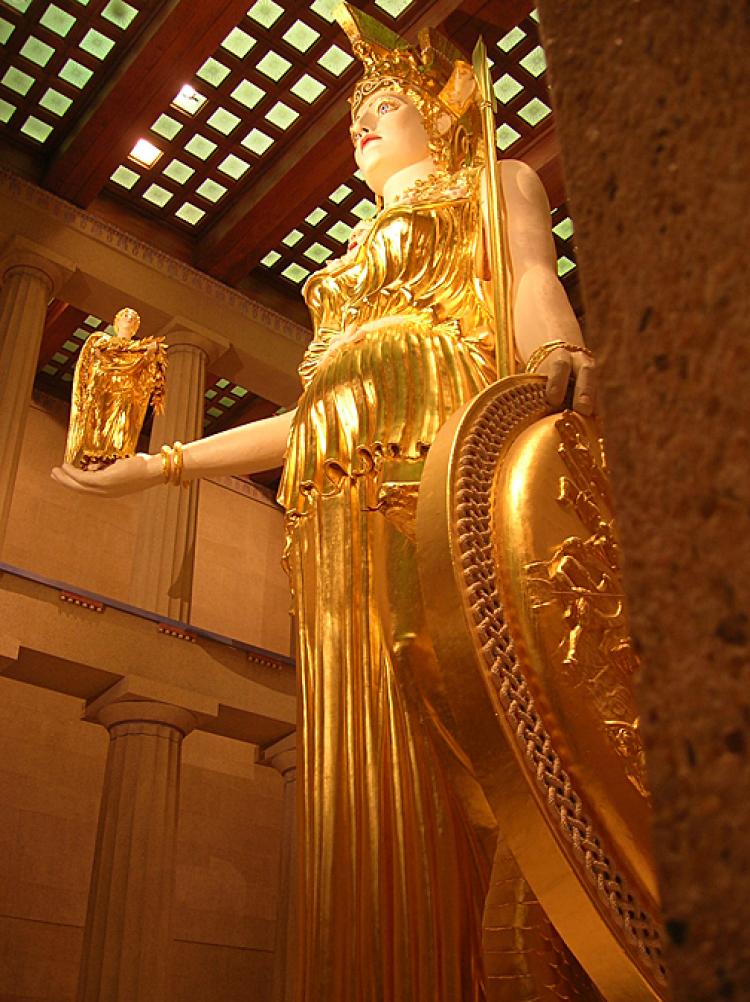In Holy Pursuit of Perfection
We know Greek architecture to emphasize physical perfection, balance, and symmetry based on a mathematical understanding of aesthetics...

A reconstruction of the chryselephantine statue of Athena Parthenos from the Parthenon, stands on display in the Parthenon replica at Nashville, Tennessee. Paul Lithgow
|Updated:






